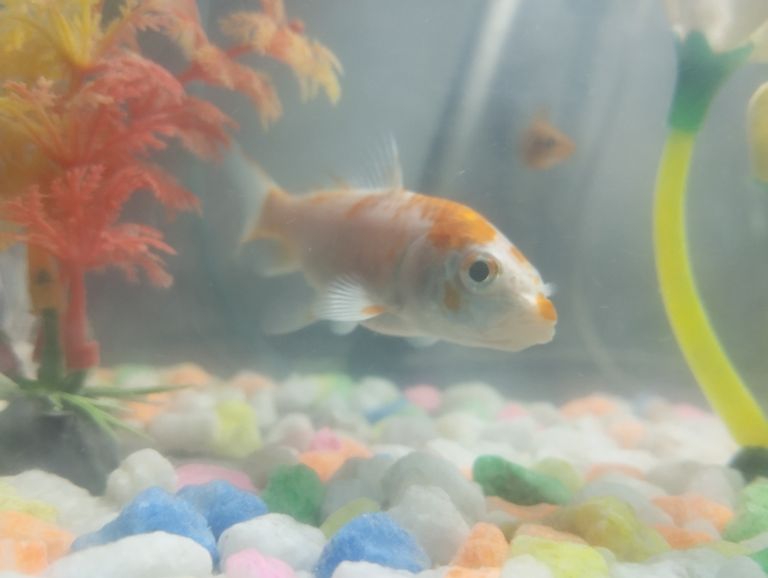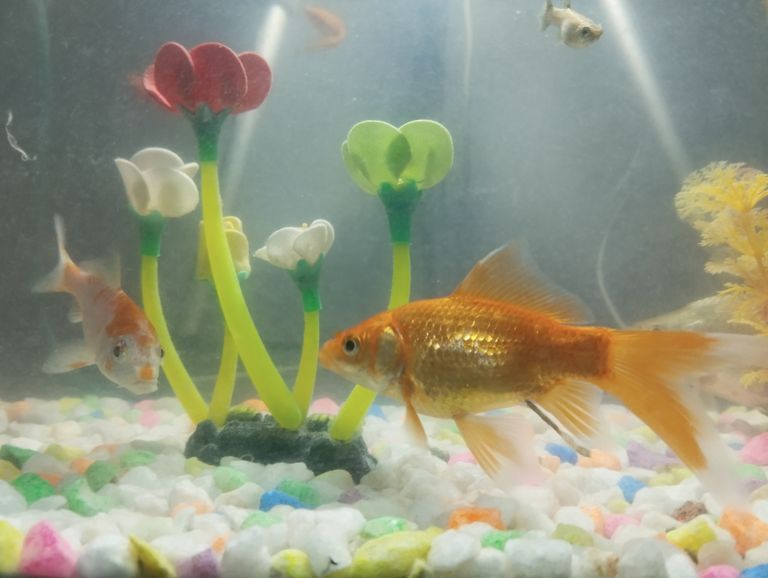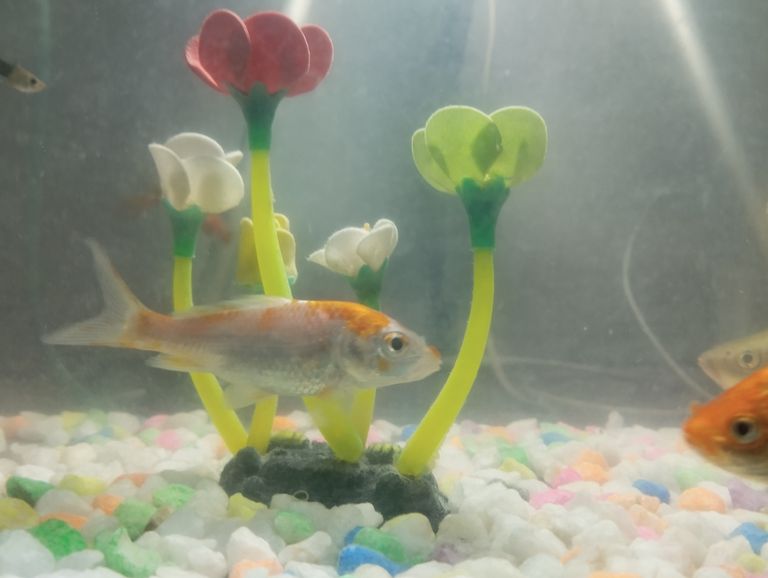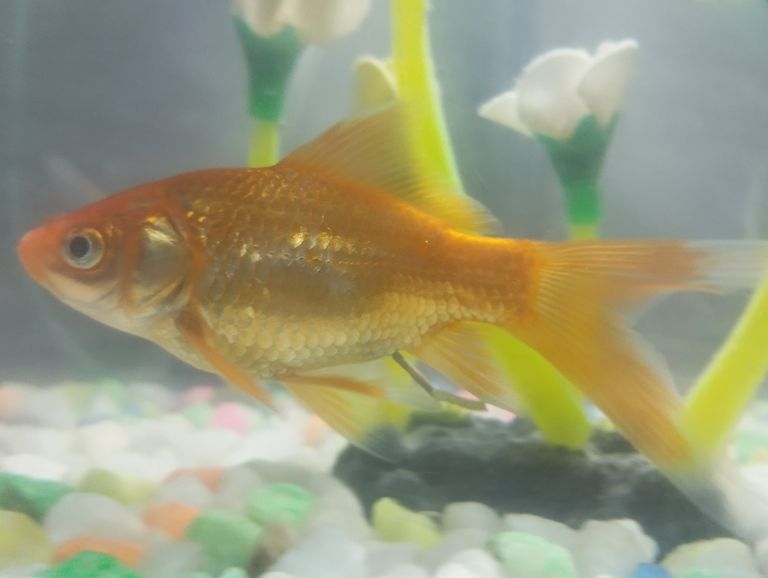
A Complete Guide to Keeping Fish in an Aquarium.
Fishkeeping is a wonderful hobby that offers a peaceful and mesmerizing experience. Aquariums not only beautify a space but also create a soothing atmosphere. However, to successfully maintain an aquarium, it’s important to understand the basic principles and practices of fishkeeping. This blog will guide you through the necessary steps and considerations for keeping fish in an aquarium, ensuring a healthy environment for your aquatic friends.
- Selecting the Right Aquarium
The first step in fishkeeping is choosing the appropriate aquarium. Aquariums come in a variety of shapes and sizes. You need to consider the type and number of fish you want to keep before selecting the size. Generally, larger tanks are easier to manage as they have a stable environment compared to smaller ones, which can be affected more by slight changes in water conditions.
Key Considerations:
Size: A larger tank (at least 20 gallons) is recommended for beginners.
Shape: Longer tanks provide more surface area for gas exchange, which is better for fish.
Material: Glass and acrylic are the most common materials. Glass is scratch-resistant, while acrylic is lighter and more customizable.
- Aquarium Setup: Creating a Safe Habitat
Once you have your aquarium, it’s time to set it up. A healthy aquarium requires a balance of water chemistry, filtration, lighting, and proper décor that mimics a fish’s natural habitat.
Steps for Setup:
Cleaning the Aquarium: Wash the tank with plain water and avoid using soap or chemicals.
Adding Substrate: Gravel or sand works well as a base for most aquariums. Rinse it before adding.
Installing Equipment: You’ll need a filter, heater (if keeping tropical fish), thermometer, and lighting. Place them according to the manufacturer’s instructions.
Filling the Tank: Use dechlorinated water. Fill the tank about halfway to adjust decorations.
Cycling the Tank: Let the aquarium run for a week before adding fish. This allows the filter to build beneficial bacteria, which break down waste products.
- Choosing Fish for Your Aquarium
Not all fish are suitable for beginners. Some require specific conditions and care that can be difficult to maintain. Start with hardy fish that are more tolerant of a wide range of conditions.
Best Fish for Beginners:
Guppies: Small, colorful, and easy to care for.
Betta Fish: Known for their vibrant colors and flowing fins. They can live in small tanks but prefer warm water.
Neon Tetras: Peaceful schooling fish that do well in community tanks.
Zebra Danios: Active and hardy, they can thrive in a variety of water conditions.
Corydoras Catfish: Bottom dwellers that help keep the tank clean by eating leftover food.
When choosing fish, make sure their environmental needs (water temperature, pH, etc.) are compatible with each other.
- Feeding Your Fish
A common mistake many new aquarium owners make is overfeeding their fish. Fish should only be fed what they can consume in 2–3 minutes, once or twice a day. Overfeeding can cause leftover food to decompose, leading to poor water quality.
Types of Fish Food:
Flake Food: Suitable for most small to medium-sized fish.
Pellets: Good for larger fish like cichlids or bottom feeders.
Frozen or Live Food: Offer occasionally to carnivorous fish for variety. Examples include bloodworms or brine shrimp.
It’s important to note that different fish species have different dietary needs. Research your fish’s nutritional requirements to ensure a balanced diet.
- Maintaining Water Quality
Water quality is the most critical factor in keeping fish healthy. Poor water quality can lead to stress, illness, and death in fish. Regular maintenance is necessary to keep the water conditions stable.
Key Water Parameters:
pH Level: Most freshwater fish thrive in a pH between 6.5 and 7.5. Test the water regularly to ensure consistency.
Ammonia, Nitrite, and Nitrate: These are waste products that can be harmful to fish if levels become too high. Regular water changes and using a good filter can help manage these toxins.
Temperature: Tropical fish require water between 75°F and 80°F, while cold-water fish, like goldfish, prefer cooler temperatures. Keep an aquarium thermometer to monitor this.
Maintenance Tips:
Water Changes: Perform a partial water change (10-20%) weekly. Use a siphon to remove debris from the substrate.
Filter Maintenance: Clean or replace filter media monthly. Avoid rinsing it in tap water as this kills beneficial bacteria; instead, use old aquarium water.
Testing Kits: Regularly test water parameters using an aquarium testing kit to ensure your fish are living in optimal conditions.
- Aquarium Plants and Decorations
Adding plants and decorations to your aquarium is not only visually pleasing but can also provide benefits to the fish. Plants help in oxygenating the water, while decorations offer hiding places for fish, reducing their stress.
Aquatic Plants:
Anubias, Java Fern, and Hornwort: These are beginner-friendly plants that require low light and minimal care.
Decorations:
Ensure that all decorations are aquarium-safe and won’t alter water chemistry. Avoid sharp objects that may harm your fish.
- Preventing and Treating Common Fish Diseases
Fish are susceptible to a variety of diseases, especially when stressed or kept in poor water conditions. Some common signs of illness include erratic swimming, loss of appetite, white spots, or clamped fins.
Common Fish Diseases:
Ich: A parasitic infection that causes white spots on the fish’s body. It can be treated with over-the-counter medication.
Fin Rot: Caused by bacterial or fungal infections, leading to frayed or decaying fins. Clean water and medication can cure this condition.
Swim Bladder Disorder: Affects the fish’s buoyancy, causing it to float or sink uncontrollably. It’s often due to overfeeding or constipation.
Prevention is better than cure. To prevent diseases, maintain good water quality, avoid overcrowding, and quarantine new fish before adding them to your main tank.
- Special Considerations for Different Types of Fish
Fishkeeping becomes more specialized as you explore different types of fish. For example, marine fishkeeping requires saltwater and more advanced equipment, while cichlid tanks may need specific water hardness levels.
Tropical vs. Coldwater Fish:
Tropical Fish: Require heated water and often come from warm regions like the Amazon.
Coldwater Fish: Can survive in unheated tanks. Goldfish are a popular example of coldwater fish.
- The Importance of Patience and Observation
One of the most crucial aspects of fishkeeping is patience. Many problems in an aquarium occur slowly, over time. Regularly observe your fish for any signs of distress or disease. Slow, consistent care is better than rushing to fix issues when they arise.
Final Thoughts: Maintaining an aquarium is a rewarding experience that requires attention to detail, consistency, and care. As you become more experienced, you can explore different types of fish, plants, and aquascaping techniques. With the right approach, your aquarium can become a thriving, beautiful environment that brings joy for years to come.
By following these guidelines, you’ll be well on your way to enjoying the relaxing and fulfilling hobby of fishkeeping.


How to Set Up an Aquarium: A Complete Guide
Setting up an aquarium is a rewarding hobby that allows you to create a vibrant, underwater world in your home. However, creating the perfect environment for your aquatic pets requires careful planning and proper setup. In this comprehensive guide, we’ll walk you through the steps of creating a healthy and thriving aquarium, from choosing the right tank to maintaining it over time.
- Choosing the Right Aquarium
The first step in setting up an aquarium is selecting the right tank. Consider the following factors when making your choice:
Size: A larger aquarium is generally easier to maintain because it offers a more stable environment for fish. For beginners, a 20- to 30-gallon tank is a great starting point. Smaller tanks (under 10 gallons) require more frequent maintenance.
Material: Aquariums are usually made of glass or acrylic. Glass tanks are more affordable and scratch-resistant, while acrylic tanks are lighter and more durable, though they scratch more easily.
Shape: While rectangular tanks are the most common and provide the best surface area for oxygen exchange, you may also choose from other shapes like cubes or bow-fronts depending on the aesthetic you prefer.
- Selecting the Location
Once you’ve chosen your aquarium, you need to find the right spot for it in your home. Here are some tips to consider:
Stable Surface: Ensure that your tank is placed on a sturdy, level surface that can support the weight of the aquarium when filled with water, rocks, and equipment.
Away from Direct Sunlight: Excessive sunlight can cause algae to grow rapidly, so keep your aquarium away from windows or other bright sources of light.
Easy Access to Power and Water: Your tank will require equipment such as filters, heaters, and lights, so make sure there is a power source nearby. It’s also essential to place the tank in an area where you can easily perform water changes.
- Gathering the Necessary Equipment
To create a healthy environment for your fish, you'll need the following equipment:
Filter: A good filtration system is essential to keep the water clean and remove waste products. Choose a filter that is appropriate for the size of your tank.
Heater: Many fish require a consistent water temperature. A heater will ensure that the water stays within the optimal range for your fish species.
Thermometer: This helps you monitor the water temperature to make sure it's suitable for your fish.
Lighting: Depending on whether you have live plants or just fish, the lighting needs will differ. LED lights are commonly used as they are energy-efficient and can be adjusted for various light spectrums.
Substrate: The material on the bottom of the tank, like gravel or sand, is important for aesthetic purposes and for some species that like to dig or forage.
Air Pump and Air Stone: These can help oxygenate the water, especially if your tank has a high fish population or less surface agitation.
Water Conditioner: Tap water contains chemicals that can be harmful to fish. Use a water conditioner to neutralize chlorine and chloramines before adding water to the tank.
- Setting Up the Aquarium
Now that you have all the equipment, it's time to set up your aquarium.
a. Preparing the Tank
Before setting up the tank, clean it with warm water. Never use soap or chemicals as residues can harm the fish. Use a soft cloth or sponge to wipe down the interior and exterior of the tank.
b. Adding Substrate
Rinse the substrate thoroughly under running water to remove any dust or debris. Spread it evenly on the bottom of the tank to a depth of about 2 to 3 inches. This will provide a foundation for plants and decoration, as well as a place for beneficial bacteria to grow.
c. Installing the Equipment
Filter: Install the filter according to the manufacturer’s instructions. Make sure the filter’s output is positioned to create good water circulation.
Heater: Submerge the heater in the water and set it to the appropriate temperature for your fish. Most tropical fish require a temperature of around 75-80°F (24-27°C).
Thermometer: Place the thermometer on the opposite side of the tank from the heater to ensure an accurate reading of the water temperature.
Lighting: Install the lighting system above the tank. If you’re using live plants, make sure the lights are appropriate for plant growth.
d. Filling the Tank with Water
Fill the tank slowly with water to avoid disturbing the substrate. Use a plate or dish on top of the substrate to diffuse the water flow. Once the tank is filled, add the water conditioner to remove harmful chemicals from the tap water.
- Cycling the Aquarium
Before adding fish, it’s important to cycle the aquarium. The nitrogen cycle is crucial for establishing a healthy environment, as it allows beneficial bacteria to break down harmful ammonia into less toxic substances.
To cycle the tank:
Add Ammonia Source: You can start the nitrogen cycle by adding a small amount of fish food, which will decompose and produce ammonia. Alternatively, you can use pure ammonia.
Test Water: Use a water testing kit to monitor ammonia, nitrite, and nitrate levels. The cycling process can take anywhere from 2 to 6 weeks.
Wait Until Safe Levels: Once ammonia and nitrite levels drop to zero and nitrate levels rise, your tank is cycled and ready for fish.
- Adding Fish to the Aquarium
Once your tank is fully cycled, you can begin adding fish. It’s important to introduce fish gradually to avoid overwhelming the bio-load of the tank. Here’s how to do it:
Research Fish Compatibility: Choose fish species that can coexist peacefully. Avoid mixing aggressive and passive species in the same tank.
Acclimate the Fish: Before releasing the fish into the tank, allow them to acclimate to the water temperature. Float the bag containing the fish in the aquarium for about 15-20 minutes, then slowly add small amounts of aquarium water to the bag to help them adjust.
Introduce Fish Gradually: Start by adding only a few fish at a time. This will help the tank maintain balance as the bacteria population grows to handle the additional waste.
- Maintaining the Aquarium
Regular maintenance is key to keeping your aquarium healthy. Follow these steps to ensure your tank stays in top condition:
Water Changes: Perform partial water changes (about 20-30%) every 1-2 weeks to remove waste and toxins. Make sure to treat the new water with a water conditioner before adding it to the tank.
Clean the Substrate: Use a gravel vacuum to clean debris from the substrate during water changes.
Monitor Water Parameters: Test the water regularly for ammonia, nitrites, nitrates, and pH levels. Adjust the conditions if needed.
Clean the Filter: Clean the filter media every 2-4 weeks, but avoid cleaning everything at once to preserve beneficial bacteria.
Check the Equipment: Ensure that all equipment is functioning properly and make any necessary adjustments.
- Troubleshooting Common Issues
Even with proper care, you may encounter some problems in your aquarium. Here are a few common issues and how to address them:
Algae Overgrowth: Reduce lighting hours, avoid overfeeding, and perform regular water changes to control algae growth.
Cloudy Water: Cloudy water may be caused by overfeeding, poor filtration, or bacterial blooms. Check your feeding routine, clean the filter, and wait for the bacteria to balance.
Sick Fish: Quarantine any sick fish and treat them with appropriate medications. Monitor the water quality to ensure it’s not contributing to health problems.
Conclusion
Setting up an aquarium requires planning, patience, and dedication, but the results are well worth it. By following these steps, you can create a beautiful and thriving aquatic ecosystem that brings joy and tranquility to your home. With proper care and maintenance, your fish will live happily in their new underwater world.

Causes of Fish Death in Aquariums: A Comprehensive Guide
Aquariums are a beautiful way to bring nature indoors, providing a serene and captivating environment. However, keeping fish in an aquarium can be challenging, especially for beginners. One of the most frustrating experiences for aquarium owners is witnessing the sudden death of fish. While fish deaths can sometimes be inevitable, understanding the potential causes can help prevent them and ensure your aquarium thrives. This blog will explore some of the most common reasons fish die in aquariums and how to address them.
- Poor Water Quality
One of the leading causes of fish death in aquariums is poor water quality. Fish are highly sensitive to changes in their environment, and water quality plays a crucial role in their health.
Ammonia and Nitrite Levels: When fish waste, uneaten food, and decaying plants accumulate in the water, it leads to the buildup of ammonia and nitrites. These chemicals are highly toxic to fish and can cause death if levels become too high. Regular water changes and using a good filtration system can help prevent the accumulation of these harmful substances.
pH Imbalance: Different fish species require different pH levels in the water. If the water is too acidic or too alkaline, it can stress the fish and eventually lead to death. Test the pH regularly and adjust as needed using pH-balancing products.
Chlorine and Chloramine: Tap water often contains chlorine and chloramine, which are harmful to fish. Always treat tap water with a water conditioner before adding it to your aquarium to neutralize these chemicals.
- Overcrowding
Overcrowding the aquarium is another common mistake that can lead to fish deaths. When too many fish are kept in a small space, it leads to increased waste production, depletion of oxygen levels, and heightened aggression among fish.
Limited Space: Different fish species have different space requirements. Overcrowding can cause stress, which weakens their immune systems, making them more susceptible to diseases. A general rule is to have one inch of fish per gallon of water, though this varies depending on the species.
Competition for Resources: In a crowded tank, fish may struggle to find enough food and may experience heightened aggression, leading to injury or death. Ensure your aquarium is appropriately sized for the number and species of fish you plan to keep.
- Improper Tank Cycling
Aquarium cycling is a critical process where beneficial bacteria are established in the tank to break down fish waste into less harmful substances. New tanks need time to develop this biological filtration system before fish can be safely added.
New Tank Syndrome: If fish are introduced to a tank that hasn’t been properly cycled, ammonia and nitrite levels can spike, leading to toxic conditions. This is known as "New Tank Syndrome," which is a common cause of fish deaths in new aquariums. Patience is key – allow your tank to cycle fully before adding fish, and monitor water parameters during the cycling process.
- Overfeeding
Overfeeding is a common mistake made by many aquarium owners, especially beginners. Fish do not need as much food as we might think, and excessive feeding can cause more harm than good.
Uneaten Food: Excess food sinks to the bottom of the tank, where it decomposes and produces harmful toxins like ammonia. This degrades water quality and can poison the fish.
Obesity and Health Issues: Overfeeding can lead to obesity and other health problems in fish, such as fatty liver disease. Feed your fish only what they can consume in a few minutes, and remove any leftover food to maintain water quality.
- Temperature Fluctuations
Fish are cold-blooded creatures, meaning their body temperature is regulated by their environment. Sudden changes in water temperature can shock fish, leading to stress and even death.
Inadequate Heating: Some fish species, especially tropical fish, require specific temperature ranges to thrive. If the water is too cold or too hot, it can affect their metabolism, immune system, and overall health. Invest in a good aquarium heater with a reliable thermostat to maintain stable water temperature.
Sudden Temperature Changes: Rapid temperature shifts, often caused by water changes or faulty heaters, can stress fish. When changing water, make sure the new water is the same temperature as the existing water to avoid shock.
- Disease and Parasites
Fish are vulnerable to various diseases and parasites, many of which can spread rapidly in a confined aquarium environment. Common signs of illness include lethargy, loss of appetite, white spots, clamped fins, and erratic swimming.
Ich (White Spot Disease): Ich is a common parasitic disease that causes white spots on the fish’s body and fins. It is often triggered by stress from poor water conditions or rapid temperature changes.
Bacterial Infections: Poor water quality or injuries can lead to bacterial infections, which can cause fin rot, ulcers, and other health problems. Regularly monitor your fish for signs of illness and treat with medications as needed.
Quarantine New Fish: New fish can introduce diseases to your aquarium. To prevent this, quarantine new fish in a separate tank for at least two weeks before introducing them to your main aquarium.
- Stress
Fish can become stressed for many reasons, and chronic stress is a silent killer in aquariums. Stress weakens the immune system, making fish more susceptible to diseases and reducing their lifespan.
Incompatible Tank Mates: Some fish are aggressive and may bully or injure more peaceful species. Research the compatibility of fish before adding them to your tank to avoid conflict and stress.
Lack of Hiding Spots: Fish need hiding spots to feel safe and reduce stress. Without plants, rocks, or caves, fish can feel exposed and anxious, leading to stress-related illnesses.
Improper Lighting: Excessive lighting can cause stress for some fish species, particularly those that prefer low-light environments. Use a timer to ensure a consistent light-dark cycle and provide shaded areas in the tank.
- Inadequate Oxygen Levels
Fish need oxygen to survive, and low oxygen levels in the water can lead to suffocation. This issue is more common in overstocked tanks or tanks with poor water circulation.
Lack of Aeration: Ensure your aquarium has proper aeration, either through air stones, filters, or surface agitation, to increase oxygen exchange. If you notice your fish gasping for air at the surface, it’s a sign that oxygen levels are too low.
High Water Temperature: Warmer water holds less oxygen than cooler water. If the water temperature in your tank rises too high, it can lead to oxygen depletion. Keep the water temperature within the ideal range for your fish species.
Conclusion
Fish deaths in aquariums are often the result of multiple factors working together. By maintaining good water quality, avoiding overfeeding, providing adequate space, and ensuring stable conditions, you can significantly reduce the chances of losing fish. Understanding the specific needs of your fish species and creating a well-balanced environment will ensure that your aquarium remains a healthy and vibrant habitat for years to come.
Preventing fish deaths requires vigilance, patience, and a willingness to learn from mistakes. With proper care and attention, your aquarium can flourish, providing a safe and beautiful home for your aquatic pets.
